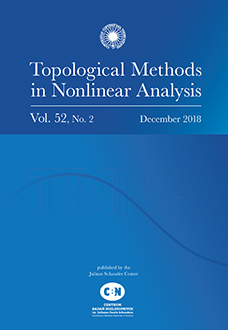Abstract
A root of an $n$-valued map $\varphi \colon X \to D_n(Y)$ at $a \in Y$ is a point $x \in X$ such that $a \in \varphi(x)$. We lift the map $\varphi$ to a split $n$-valued map of finite covering spaces and its single-valued factors are defined to be the lift factors of $\varphi$. We describe the relationship between the root classes at $a$ of the lift factors and those of $\varphi$. We define the Reidemeister root number ${\rm RR} (\varphi)$ in terms of the Reidemeister root numbers of the lift factors. We prove that the Reidemeister root number is a homotopy invariant upper bound for the Nielsen root number $NR(\varphi)$, the number of essential root classes, and we characterize essentiality by means of an equivalence relation called the $\Phi$-relation. A theorem of Brooks states that a single-valued map to a closed connected manifold is root-uniform, that is, its root classes are either all essential or all inessential. It follows that if $Y$ is a closed connected manifold, then the lift factors are root-uniform and we relate this property to the root-uniformity of $\varphi$. If $X$ and $Y$ are closed connected oriented manifolds of the same dimension then, by means of the lift factors, we define an integer-valued index of a root class of $\varphi$ that is invariant under $\Phi$-relation and this implies that if its index is non-zero, then the root class is essential.
Citation
Robert F. Brown. Daciberg Lima Gonçalves. "Lift factors for the Nielsen root theory on $n$-valued maps." Topol. Methods Nonlinear Anal. 61 (1) 269 - 289, 2023. https://doi.org/10.12775/TMNA.2022.017





